Business
Public Accounts of Canada Report Buried on Last Day of Sitting Session
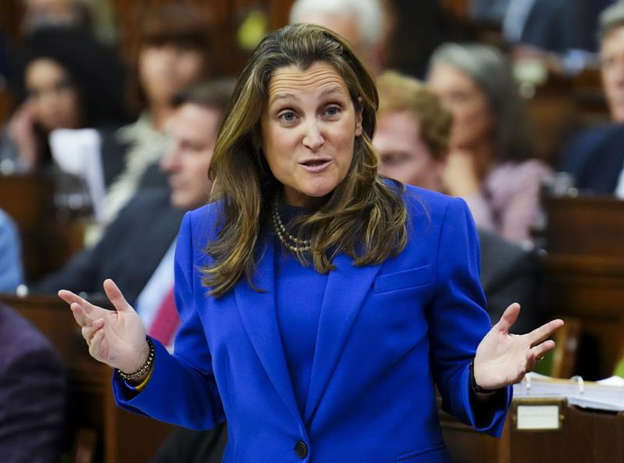
Trudeau Government Hides Exploding Deficit and Fiscal Mismanagement Amid Chaos and Distraction
Well, folks, here we go again. The Trudeau government—masterclass in obfuscation, fiscal recklessness, and zero accountability—just pulled off another slick political maneuver. This time, it’s the Public Accounts of Canada 2024, a document that should be front-page news, but this news bite is buried so deep in the news cycle you’d think it was radioactive.
Here’s what’s happening: the government dropped its final, audited financial statements for the fiscal year on the last day of the parliamentary sitting session, when no one’s watching. Why? Because it’s bad. Really bad. Let’s connect the dots.
First, we had the Fall Economic Statement released just yesterday, a forward-looking document that’s basically a glossy brochure for Trudeau’s latest spending spree. That’s what the media focused on. But the Public Accounts—that’s where you see the hard, cold truth: the deficit is exploding, hitting $61.9 billion, and Canada’s finances are way past the so-called “guardrails” Trudeau and Freeland promised us.
Let’s not forget, those guardrails were supposed to limit deficits to $40 billion, but Trudeau blew right past that, overspending by more than $20 billion. And now they’re scrambling to hide the numbers because they know Canadians will not tolerate this reckless fiscal mismanagement any longer.
Ah, yes, Chrystia Freeland—the “fiscally responsible” finance minister—who just resigned in the middle of this chaos. What are the odds? She’s out, claiming “irreconcilable differences” with Trudeau’s economic policies. Translation: she knew the books are in tatters, and she didn’t want her name on them when the inevitable reckoning comes.
Now ask yourself: if everything was fine, if Canada’s economy was strong and the government was keeping its promises, wouldn’t Trudeau and his pals want to shout this from the rooftops? Wouldn’t they want the opposition to read every page of those Public Accounts? Instead, they slid the report across the table on the last possible day—while the media was distracted, MPs were packing up, and Freeland was running for the hills.
This is the oldest trick in the book. When governments screw up, they don’t admit it. They bury the evidence, release it late, or throw out a flashy distraction. Trudeau just did all three in one week: the Fall Economic Statement, full of nice words but exposing Trudeau’s reckless spending; Chrystia Freeland’s resignation, a clear sign even she wanted no part of it; and Anita Anand quietly releasing the Public Accounts on the last day of the sitting session, hoping no one would notice as Trudeau’s crumbling leadership sucks up all the oxygen in the news cycle.
What’s in those Public Accounts that Trudeau doesn’t want you to see? Deficits far larger than what he promised? Ballooning spending on programs that are failing Canadians? Spiraling interest costs on our record-breaking debt? Likely all of the above.
Here’s the bottom line: Trudeau’s government has lost control of the country’s finances. They’re driving Canada into economic oblivion, and when the consequences hit, it won’t be politicians who pay the price. It’ll be hardworking Canadians—your taxes, your savings, your livelihoods.
And what does Trudeau do? He hides the truth, covers it up, and hopes you’re too distracted to care. This is what contempt for democracy looks like, and it’s a disgrace. Canadians deserve better.
That’s the real story here—Trudeau’s government has a deficit of trust, a deficit of competence, and now, a fiscal deficit so big it makes Freeland want to quit. You couldn’t make it up if you tried.
Stay tuned, folks, because this isn’t over. When the numbers come out, they’ll tell a story Trudeau can’t hide forever—and that story won’t be pretty.
What is the Public Accounts of Canada?
The Public Accounts of Canada is the official, audited financial report of the Government of Canada, providing a final and comprehensive overview of the federal government’s finances for the fiscal year, which runs from April 1 to March 31.
- This document is produced annually by the Receiver General for Canada and is audited by the Auditor General of Canada to ensure its accuracy, reliability, and adherence to public sector accounting standards.
- It includes detailed information about revenues, expenditures, deficits or surpluses, debt, and all financial activities of government departments, agencies, and Crown corporations.
The Public Accounts is a backward-looking document: it reports the final, audited numbers of what has already happened financially over the previous fiscal year.
How is it Different from the Fall Economic Statement?
The Fall Economic Statement is a forward-looking financial update presented by the government midway through the fiscal year, typically in November or December. It outlines the government’s current economic outlook, updates revenue and spending projections, and provides an estimate of deficits or surpluses for the upcoming years.
Key Differences Between the Public Accounts and the Fall Economic Statement
The Public Accounts of Canada and the Fall Economic Statement serve distinct purposes in the government’s financial reporting, primarily differing in their focus, timing, and level of scrutiny.
- Timeframe:
The Public Accounts are backward-looking, presenting the final, audited financial results for the previous fiscal year (April 1 to March 31). In contrast, the Fall Economic Statement is forward-looking, providing forecasts and plans for the current and upcoming fiscal years. - Purpose:
The Public Accounts offer a definitive and detailed overview of the government’s financial performance, focusing on accountability and transparency. It includes actual revenues, expenditures, deficits, and debt levels. Meanwhile, the Fall Economic Statement serves as a mid-year economic and fiscal update, often outlining new spending initiatives, policies, and projections for future budgets. - Audit Status:
A key distinction is that the Public Accounts are audited by the Auditor General of Canada. This means the numbers are verified and considered reliable. In contrast, the Fall Economic Statement consists of projections prepared by the Department of Finance and is not independently audited. - Content:
The Public Accounts present actual, finalized financial data, including where taxpayer money was spent, how much debt was accumulated, and whether the deficit or surplus matched previous promises. The Fall Economic Statement, however, focuses on estimates—projecting government spending, deficits, and economic growth into the future. - Timing:
Traditionally, the Public Accounts are tabled in the fall, typically between late September and October. This timing ensures that Parliament and the public have an opportunity to analyze the government’s financial performance before the year ends. The Fall Economic Statement, on the other hand, is released later in the fall, usually in November or December, as a political and economic update.
The Bottom Line
The Public Accounts of Canada is about facts and accountability, providing hard, audited numbers on what the government actually did with its finances. The Fall Economic Statement is about forecasts and priorities, giving Canadians a sense of where the government intends to go financially and politically. While both are important, only the Public Accounts holds the government accountable for its actual financial record.
Why it Matters
- The Public Accounts hold the government accountable for its actual spending and deficits. Because they are audited, these numbers are considered the final word on the government’s fiscal performance.
- The Fall Economic Statement, however, is a political document. It forecasts future spending, reflects policy priorities, and often contains new announcements or programs. While it gives an idea of where the government thinks finances are headed, it’s not final or independently audited.
Final Thoughts
The Public Accounts of Canada is a finalized, audited report that shows where the government’s money actually went—the truth, the real numbers, no spin, no glossy brochures. It’s the hard, cold record of how this government spent your hard-earned tax dollars. The Fall Economic Statement, by contrast, is just a wish list—a forward-looking document full of lofty promises, political spin, and projections that rarely match reality. One is about accountability. The other is about politics and promises.
Both matter, but only one tells Canadians the hard truth about the state of our country’s finances. And let’s be clear: this Public Accounts report isn’t going away. Come the next session, the Public Accounts Committee will be digging through every page of this government’s fiscal mismanagement. They’ll expose what Trudeau, Freeland, and now LeBlanc have done to this country’s finances—runaway deficits, bloated spending, mountains of debt our kids will have to pay off.
And where is the NDP in all this? They’ll criticize just enough to keep up appearances, but let’s not pretend they’re not part of the problem. They’ve traded your children’s future for a seat at Trudeau’s crumbling table. For what? A dental plan? A plan that sounds great on paper, but let’s face it: what good is getting your teeth cleaned when you can’t afford to put food on the table? What good is a government that pretends to care about affordability while driving this country further into debt?
Canadians deserve better than this. Our families, our children, and our seniors deserve better. This country was built on the promise of hard work, sacrifice, and the dream of a better life for the next generation. But that dream is being stolen—piece by piece—by a government with no respect for fiscal responsibility, no sense of accountability, and no real plan for the future. Instead, they’re mortgaging your kids’ future, spending money we don’t have on programs we can’t afford, all to cling to power a little longer.
This is about more than budgets and deficits. This is about Canada—about the values that built this country. We are a nation of workers, builders, and innovators. We are a people who believe in living within our means, taking responsibility for ourselves and our families, and handing something better to the next generation. That’s what makes Canada strong. And that’s what this government is destroying—recklessly, selfishly, and without shame.
Canadians are tired of the misplaced priorities. Tired of being told there’s no money for veterans, farmers, or small businesses while this government burns through billions on their pet projects and political handouts. Tired of watching their taxes go up, their cost of living skyrocket, and their dreams slip further and further out of reach.
It’s time to stop this madness. Canadians deserve a government that respects their sacrifices, lives within its means, and understands that every dollar it spends belongs to you—not them. This country is not Justin Trudeau’s personal playground. It’s your country. It’s our country. And it’s time to take it back.
We need an election. Canadians need to send a message to this government that enough is enough. We will not stand by while they gamble away our future. We will not let them bury the truth in backroom releases and holiday distractions. This is our Canada, and it’s time to fight for it. For our families, for our future, and for the country we love.
Support independent journalism by subscribing to The Opposition with Dan Knight .
For the full experience, upgrade your subscription.
Automotive
Auto giant shuts down foreign plants as Trump moves to protect U.S. industry

 MxM News
MxM News
Quick Hit:
Stellantis is pausing vehicle production at two North American facilities—one in Canada and another in Mexico—following President Donald Trump’s announcement of 25% tariffs on foreign-made cars. The move marks one of the first corporate responses to the administration’s push to bring back American manufacturing.
Key Details:
-
In an email to workers Thursday, Stellantis North America chief Antonio Filosa directly tied the production pause to the new tariffs, writing that the company is “continuing to assess the medium- and long-term effects” but is “temporarily pausing production” at select assembly plants outside the U.S.
-
Production at the Windsor Assembly Plant in Ontario will be paused for two weeks, while the Toluca Assembly Plant in Mexico will be offline for the entire month of April.
-
These plants produce the Chrysler Pacifica minivan, the new Dodge Charger Daytona EV, the Jeep Compass SUV, and the Jeep Wagoneer S EV.
Diving Deeper:
On Wednesday afternoon in the White House Rose Garden, President Trump announced sweeping new tariffs aimed at revitalizing America’s auto manufacturing industry. The 25% tariffs on all imported cars are part of a broader “reciprocal tariffs” strategy, which Trump described as ending decades of globalist trade policies that hollowed out U.S. industry.
Just a day later, Stellantis became the first major automaker to act on the new policy, halting production at two of its international plants. According to an internal email obtained by CNBC, Stellantis North American COO Antonio Filosa said the company is “taking immediate actions” to respond to the tariff policy while continuing to evaluate the broader impact.
“These actions will impact some employees at several of our U.S. powertrain and stamping facilities that support those operations,” Filosa wrote.
The Windsor, Ontario plant, which builds the Chrysler Pacifica and the newly introduced Dodge Charger Daytona EV, will shut down for two weeks. The Toluca facility in Mexico, responsible for the Jeep Compass and Jeep Wagoneer S EV, will suspend operations for the entire month of April.
The move comes as Stellantis continues to face scrutiny for its reliance on low-wage labor in foreign markets. As reported by Breitbart News, the company has spent years shifting production and engineering jobs to countries like Brazil, India, Morocco, and Mexico—often at the expense of American workers. Last year alone, Stellantis cut around 400 U.S.-based engineering positions while ramping up operations overseas.
Meanwhile, General Motors appears to be responding differently. According to Reuters, GM told employees in a webcast Thursday that it will increase production of light-duty trucks at its Fort Wayne, Indiana plant—where it builds the Chevrolet Silverado and GMC Sierra. These models are also assembled in Mexico and Canada, but GM’s decision suggests a shift in production to the U.S. could be underway in light of the tariffs.
As Trump’s trade reset takes effect, more automakers are expected to recalibrate their production strategies—potentially signaling a long-awaited shift away from offshoring and toward rebuilding American industry.
Business
‘Time To Make The Patient Better’: JD Vance Says ‘Big Transition’ Coming To American Economic Policy
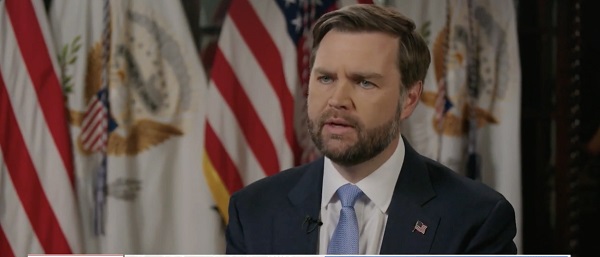
JD Vance on “Rob Schmitt Tonight” discussing tariff results

From the Daily Caller News Foundation
By Hailey Gomez
Vice President JD Vance said Thursday on Newsmax that he believes Americans will “reap the benefits” of the economy as the Trump administration makes a “big transition” on tariffs.
The Dow Jones Industrial Average dropped 1,679.39 points on Thursday, just a day after President Donald Trump announced reciprocal tariffs against nations charging imports from the U.S. On “Rob Schmitt Tonight,” Schmitt asked Vance about the stock market hit, asking how the White House felt about the “Liberation Day” move.
“We’re feeling good. Look, I frankly thought in some ways it could be worse in the markets, because this is a big transition. You saw what the President said earlier today. It’s like a patient who was very sick,” Vance said. “We did the operation, and now it’s time to make the patient better. That’s exactly what we’re doing. We have to remember that for 40 years, we’ve been doing this for 40 years.”
“American economic policy has rewarded people who ship jobs overseas. It’s taxed our workers. It’s made our supply chains more brittle, and it’s made our country less prosperous, less free and less secure,” Vance added.
Vance recalled that one of his children had been sick and needed antibiotics that were not made in the United States. The Vice President called it a “ridiculous thing” that some medicines invented in the country are no longer manufactured domestically.
“That’s fundamentally what this is about. The national security of manufacturing and making the things that we need, from steel to pharmaceuticals, antibiotics, and so forth, but also the good jobs that come along when you have economic policies that reward investing in America, rather than investing in foreign countries,” Vance said.
WATCH:
With a baseline 10% tariff placed on an estimated 60 countries, higher tariffs were applied to nations like China and Israel. For example, China, which has a 67% tariff on U.S. goods, will now face a 34% tariff from the U.S., while Israel, which has a 33% tariff, will face a 17% U.S. tariff.
“One bad day in the stock market, compared to what President Trump said earlier today, and I think he’s right about this. We’re going to have a booming stock market for a long time because we’re reinvesting in the United States of America. More importantly than that, of course, the people in Wall Street have done well,” Vance said.
“We want them to do well. But we care the most about American workers and about American small businesses, and they’re the ones who are really going to benefit from these policies,” Vance said.
The number of factories in the U.S., Vance said, has declined, adding that “millions of workers” have lost their jobs.
“My town [Middletown, Ohio], where you had 10,000 great American steel workers, and my town was one of the lucky ones, now probably has 1,500 steel workers in that factory because you had economic policies that rewarded shipping our jobs to China instead of investing in American workers,” Vance said. “President Trump ran on changing it. He promised he would change it, and now he has. I think Americans are going to reap the benefits.”
-

 Business2 days ago
Business2 days agoCalifornia planning to double film tax credits amid industry decline
-
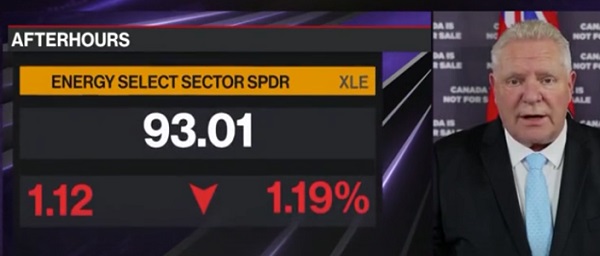
 2025 Federal Election2 days ago
2025 Federal Election2 days ago‘I’m Cautiously Optimistic’: Doug Ford Strongly Recommends Canada ‘Not To Retaliate’ Against Trump’s Tariffs
-

 Business2 days ago
Business2 days agoCanada may escape the worst as Trump declares America’s economic independence with Liberation Day tariffs
-

 Alberta2 days ago
Alberta2 days agoBig win for Alberta and Canada: Statement from Premier Smith
-

 Catherine Herridge2 days ago
Catherine Herridge2 days agoFBI imposed Hunter Biden laptop ‘gag order’ after employee accidentally confirmed authenticity: report
-
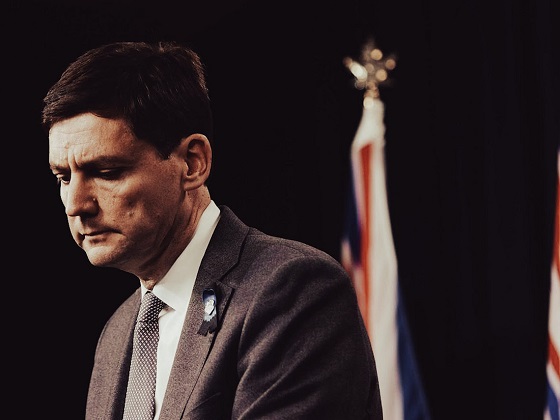
 Business1 day ago
Business1 day agoB.C. Credit Downgrade Signals Deepening Fiscal Trouble
-

 COVID-1922 hours ago
COVID-1922 hours agoTrump’s new NIH head fires top Fauci allies and COVID shot promoters, including Fauci’s wife
-
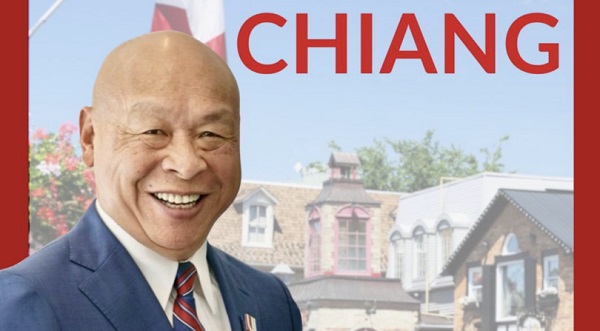
 2025 Federal Election2 days ago
2025 Federal Election2 days agoLiberal MP resigns after promoting Chinese government bounty on Conservative rival








